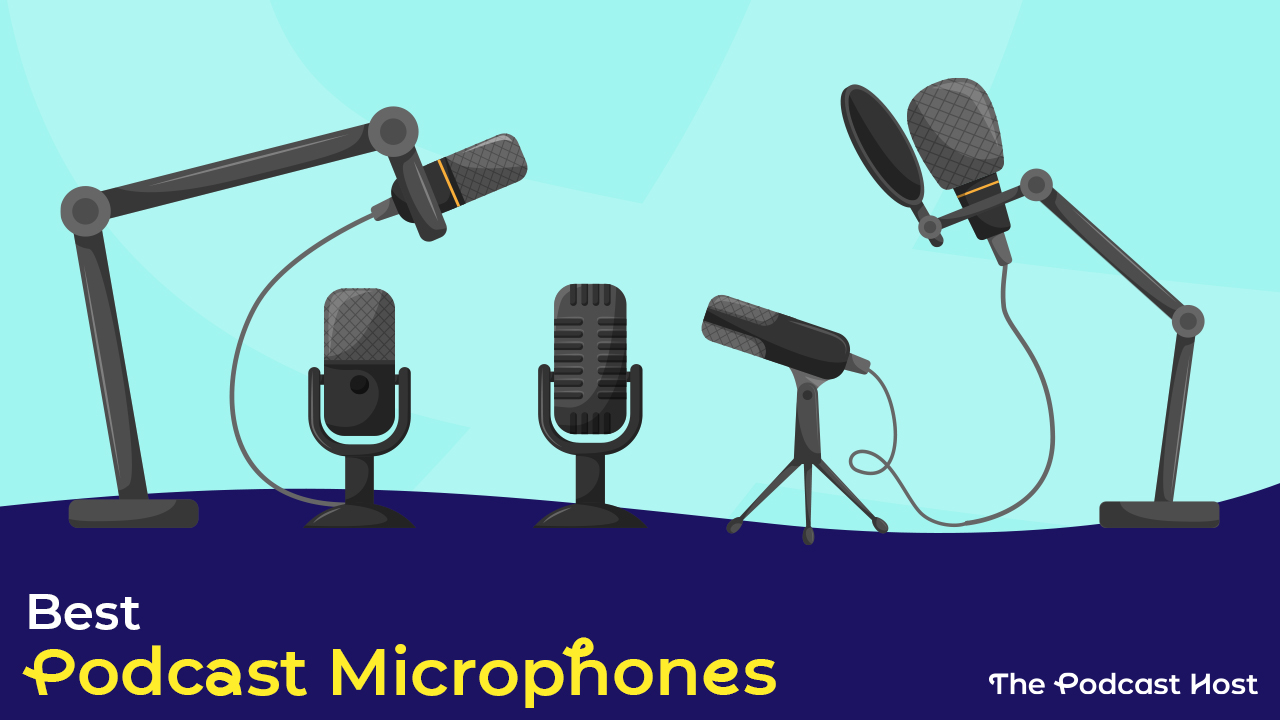Microphone Polar Patterns: Which Mic to Choose & How to Use
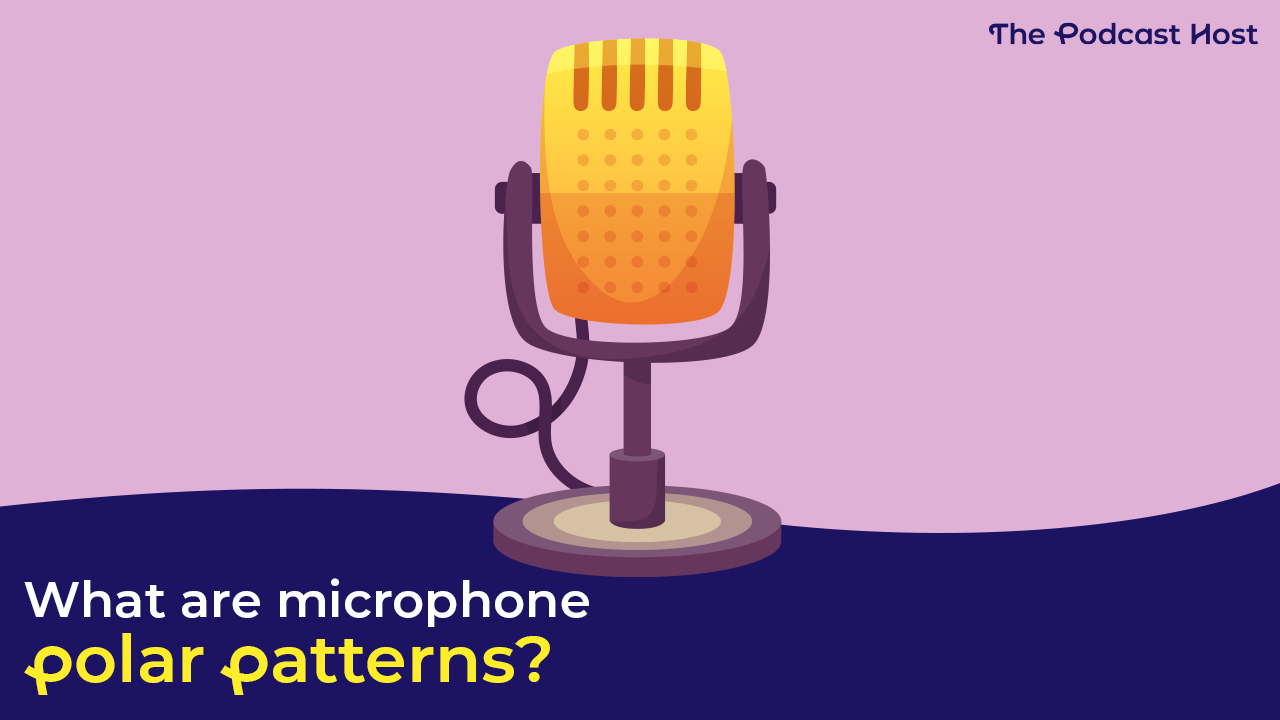
Microphone Polar Patterns: At-a-glance
- Microphone polar patterns determine the area a mic will focus on when recording sound.
- Each polar pattern has its own specialised use cases. For example, Omnidirectional records all around the mic, whilst Shotgun is laser-focused towards a specific point.
- The most common microphone polar pattern for podcasters (or anyone talking into a mic) is Cardioid.
- Other common polar patterns are Subcardioid, Supercardioid, Hypercardioid, and Bi-directional.
- Read on to get the full lowdown on microphone polar patterns, and why they matter…
Before buying or using a mic, it’s a good idea to find out if it’s the best tool for the job. There are loads of great microphones on the market these days – but the perfect model for a touring musician is going to be a lot different for, say, someone who narrates audiobooks.
There are various factors to weigh up when deciding if a particular mic is an ideal choice for you or not. An obvious one is budget. Another is whether it’s a dynamic or condenser build. A third notable factor is the microphone’s polar pattern options, which we’re going to help you with in this handy guide.
Microphone Polar Patterns: What’s the Difference?
Microphone polar (or pickup) patterns determine the area a mic will focus on when recording sound.
In this article, we’re going to take a look at seven different polar patterns, and the uses of each one.
These patterns are Omnidirectional, Subcardioid, Cardioid, Supercardioid, Hypercardioid, Bi-directional, and Shotgun.
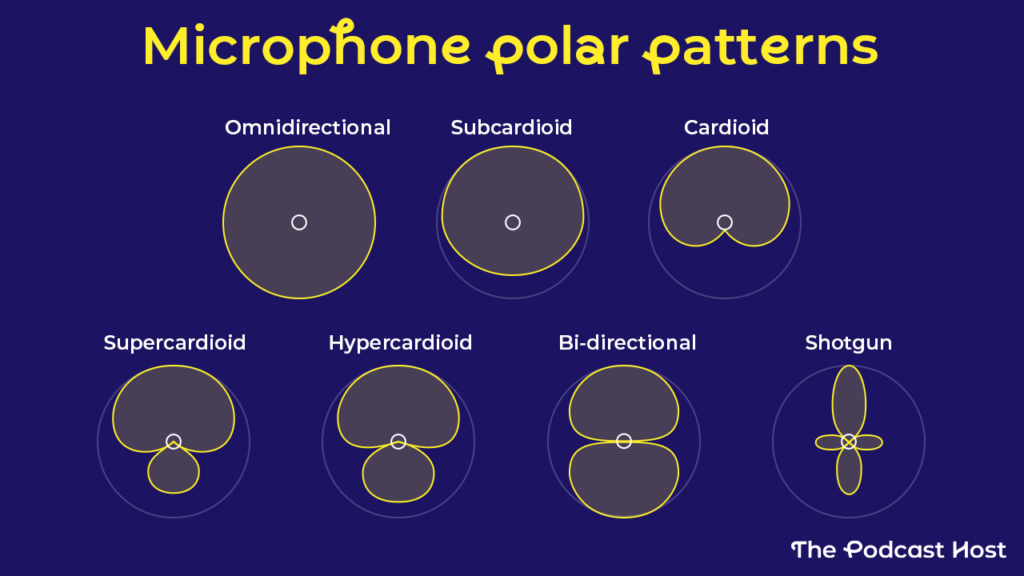
Take a look at these polar patterns and imagine each circle is the birds-eye view of a round room. The small circles in the centre of each pattern represent the microphone in the room, and the lighter shapes represent the areas from which the microphone is ‘hearing’ sound.
Some microphones have two or more polar patterns, while others simply have one. A common multi-pattern USB mic is the Blue Yeti.
Let’s take a closer look at each of these microphone polar patterns.
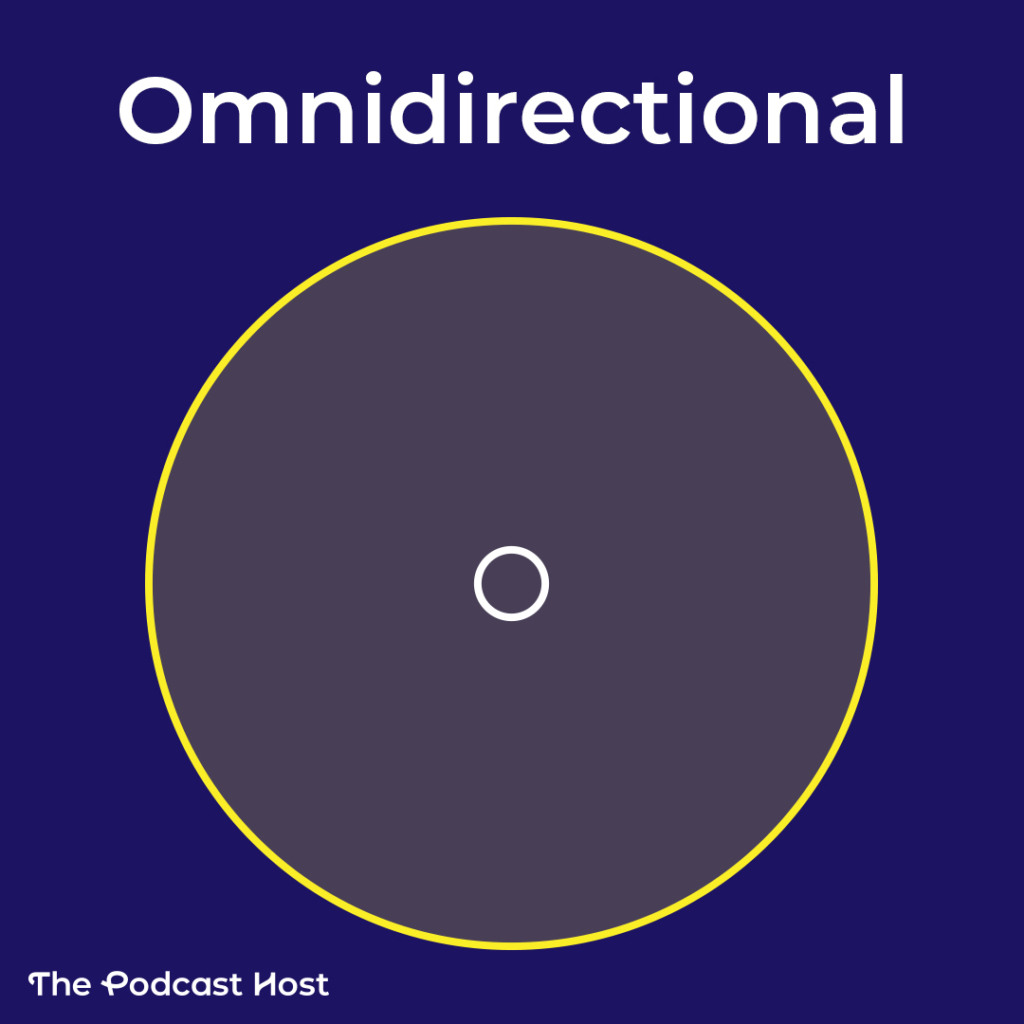
Omnidirectional Polar Pattern
The first pattern is omnidirectional. This means that sound is being picked up equally right around the mic. Omnidirectional polar patterns are usually the default setting in lavalier mics because of the way they pin to the clothing and aren’t directly in front of the mouth.
You might choose the omnidirectional setting on a mic if you were recording with a few people around a table and setting the mic in the middle of everyone. This setup won’t give you the audio quality of having a mic for each person, but if it’s your only option for now, it’ll get you by in the short term.
Omnidirectional Microphone Pitfalls
I’ve already mentioned the Blue Yeti, a mic with multiple polar pattern options. It’s a good enough mic when used in the right way, but you’ll often hear podcasters complaining that their Blue Yeti sounds bad. Typically, this is because they have it working in ‘Omnidirectional’ when using it in a solo or remote call setting. Simply switch it to Cardioid, and you’ll be good as gold.
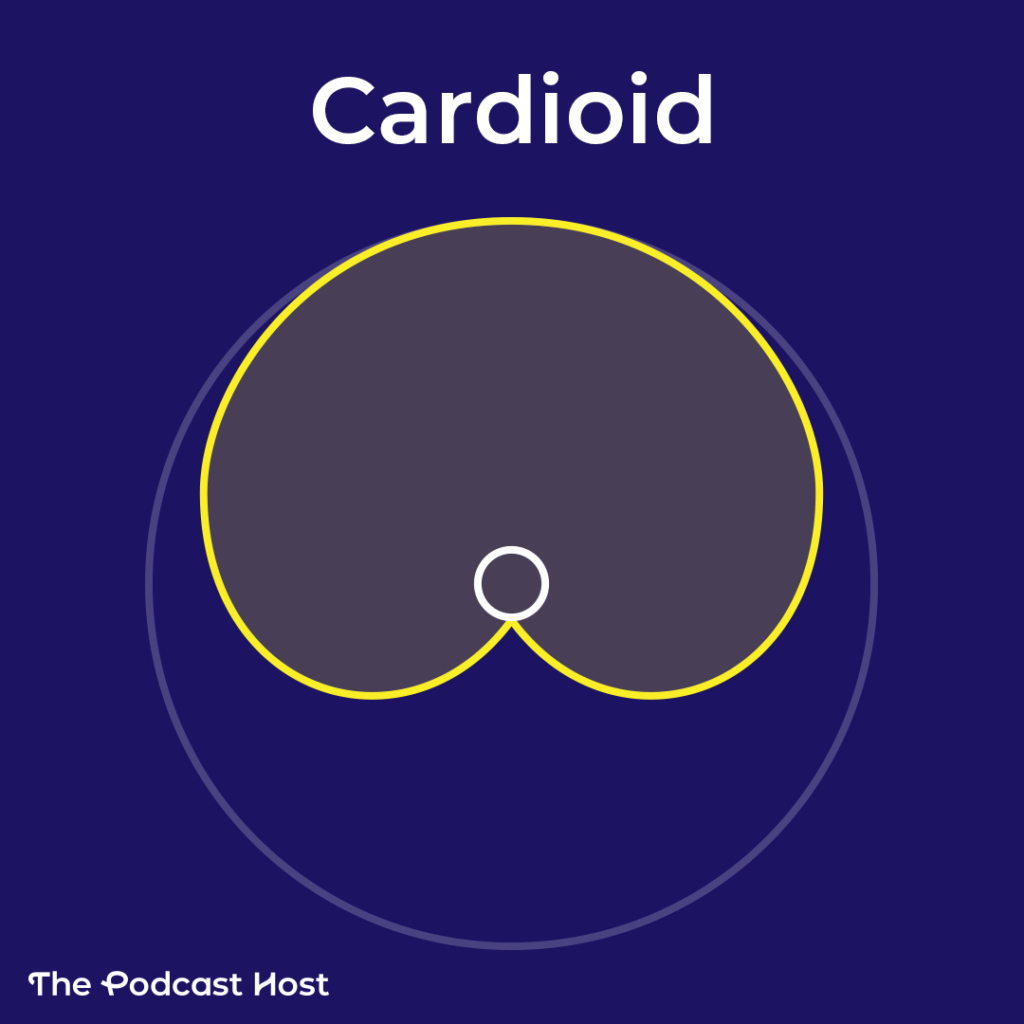
Cardioid
The cardioid polar pattern looks to pick up sound from the front of the microphone whilst minimising any sound coming from behind it. Cardioid and its variations are known as ‘directional’ patterns because they can be pointed toward sound sources.
The traditional cardioid pattern is perfect for a solo presenter talking into a mic (this also applies to anyone doing remote calls). It’s the most common microphone polar pattern you will likely find when shopping for a mic.
Cardioid Microphones & Minimising Reverb
One big plus of using a cardioid pattern setting is that they’re pretty good at minimising reverb effects if you’re recording in a room that isn’t sound-treated/dampened.
Cardioid Microphones, Distance, & Proximity Effect
One negative is that they suffer from the “proximity effect”, which means that the low bass frequencies in a recording increase when the mic is moved closer to the sound source (your voice).


Supercardioid & Hypercardioid Polar Patterns
If you wanted to narrow the area where sound is being picked up in front of the mic, you could switch to supercardiod. The trade-off here is that you’ll now have an area of greater sensitivity to sound behind the mic. Switching from supercardioid to hypercardioid will further narrow the area of sensitivity at the front, but also further increase the area of sensitivity to the rear.
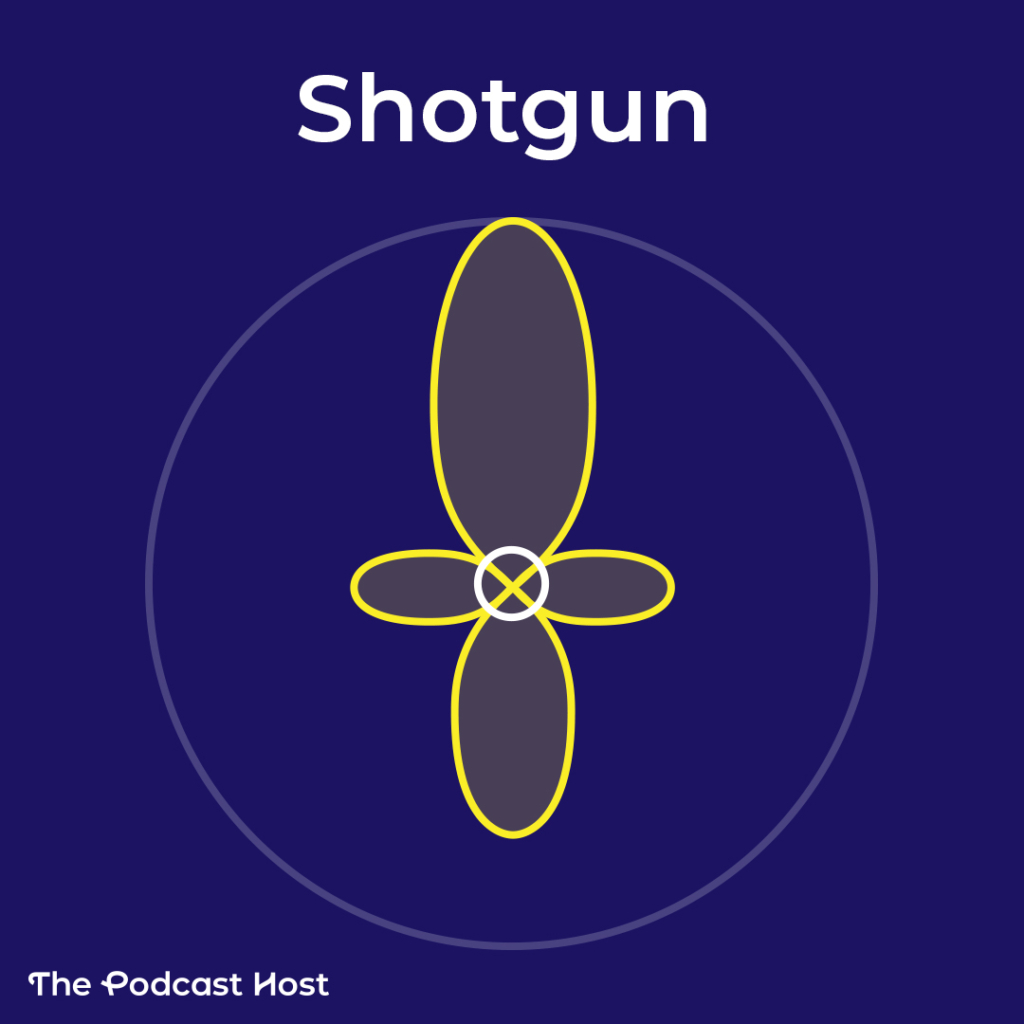
Shotgun – Lazer Focused Sound Sensitivity
The shotgun setting is the most directional of the microphone polar patterns. Shotgun mics are commonly used in film sound to record actor dialogue. They are long, thin mics designed to be pointed at a sound source from a distance. A good example of a shotgun mic is the Zoom SSH-6.

Subcardioid
This is another variation of the cardioid pattern. It looks like a cross between cardioid and omnidirectional. The subcardioid pattern is better suited to picking up a sound source that might be moving around a lot whilst remaining at the front of the mic.
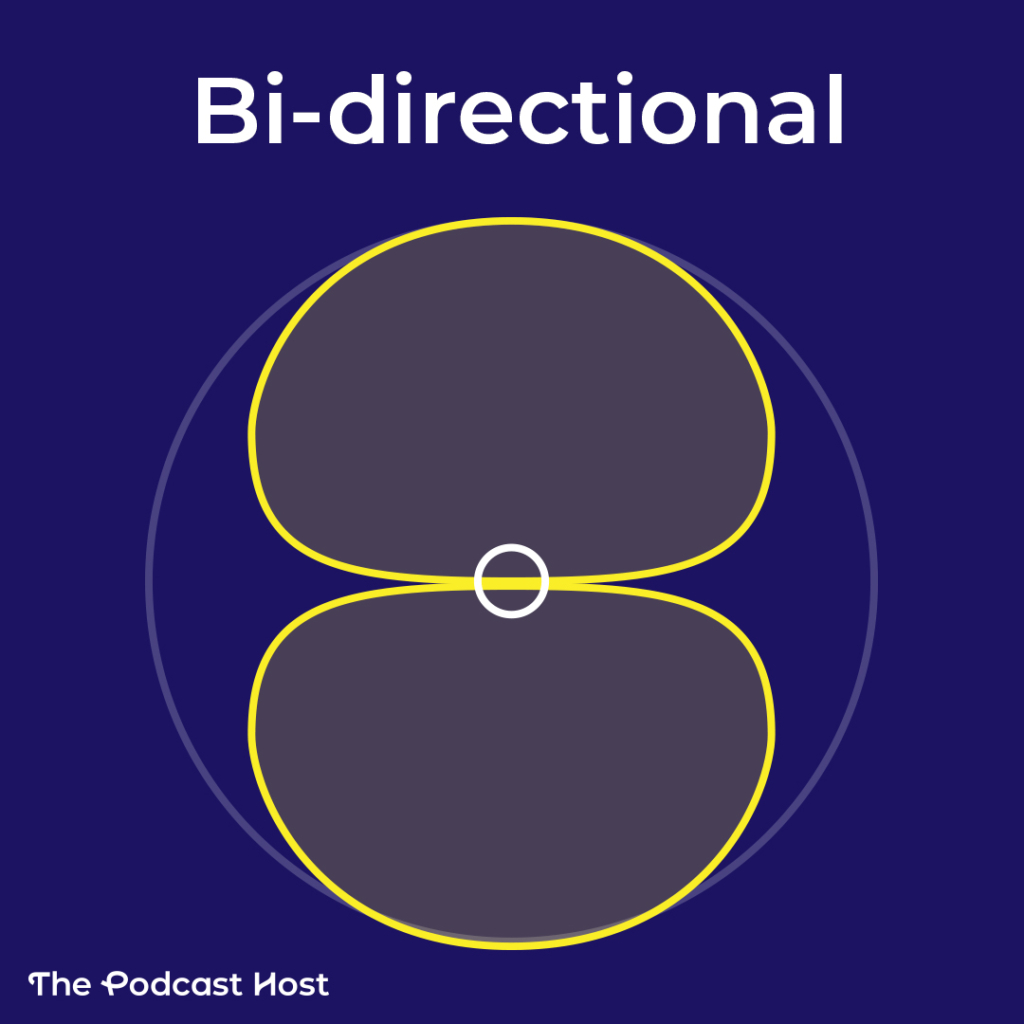
Bi-Directional Polar Pattern
The bi-directional polar pattern picks up sound equally from both the front and back whilst rejecting sound from either side of the mic. It is also known as a ‘figure eight’ pattern.
This pattern is ideal if you use a single mic for face-to-face interviews.

What Is Frequency Response in Relation to Microphone Polar Patterns?
Okay, so when we talk about frequency response for microphones, we’re basically talking about how the mic reacts to different frequencies of sound. This is usually measured by plotting out the mic’s sensitivity to each frequency in a range from 20 Hz to 20 kHz.
Now, the frequency response of a mic can actually have an impact on its polar pattern. For example, if a mic is super sensitive to high frequencies, it might pick up more sound from the sides and back, which can affect the way it captures sound. On the flip side, if a mic isn’t very sensitive to low frequencies, it might be more directional at lower frequencies and more omnidirectional at higher frequencies.
So, basically, the frequency response of a mic can affect how it captures sound, which in turn can impact its polar pattern.
What About the Microphone Angle?
When we talk about microphone polar patterns, we also need to consider the angle at which the sound wave hits the mic. This angle can affect a few things – phase difference, pressure difference, and amplitude difference – which basically means the timing, strength, and overall volume of the sound waves that reach different parts of the microphone.
Let’s take a cardioid mic as an example. If the sound is coming from the front of the mic, you’re all good – no major differences in the sound captured. But if the sound is coming from the sides or the back, you’ll notice some differences in the sound captured by the mic.
Another example is a figure eight mic, which captures sound equally from the front and back but very little from the sides. So, you need to position the mic in a way that the sound is coming from the front or the back.
So, the angle of the sound wave hitting the mic can totally affect the sound captured by the mic. By understanding your mic’s polar pattern and knowing where to position it, you can capture the best possible sound for your needs!
Which Microphone Polar Pattern Should I Use?
Although we’ve covered seven different microphone polar patterns and their use cases, you’ll unlikely be presented with many options when buying a mic.
Most of the mics you’ll come across will be cardioid. There are few situations where cardioid mics would be unsuitable. They’re ideal for recording solo/monologue podcasts or running online interviews. You can also use them to record local conversations – just make sure each participant has their own mic.
If you’re on a very tight budget, you might consider using an omnidirectional mic to gather folks around a table. Likewise, you could use a bi-directional mic to record a conversation with one other person.
Sharing a mic will drastically lower your audio quality. If it gets you by in the early days, go for it. But in the long term, you’ll want to get a digital recorder or audio interface to mic each person up independently.
Remember to check out our best podcast microphones guide, and also our wider podcast equipment guide when shopping around for your gear. Also, we run weekly live Q&A sessions inside Podcraft Academy if you’d like more tailored help with any aspect of podcasting. You’ll find all of our courses, resources, and downloadable checklists there, too!
